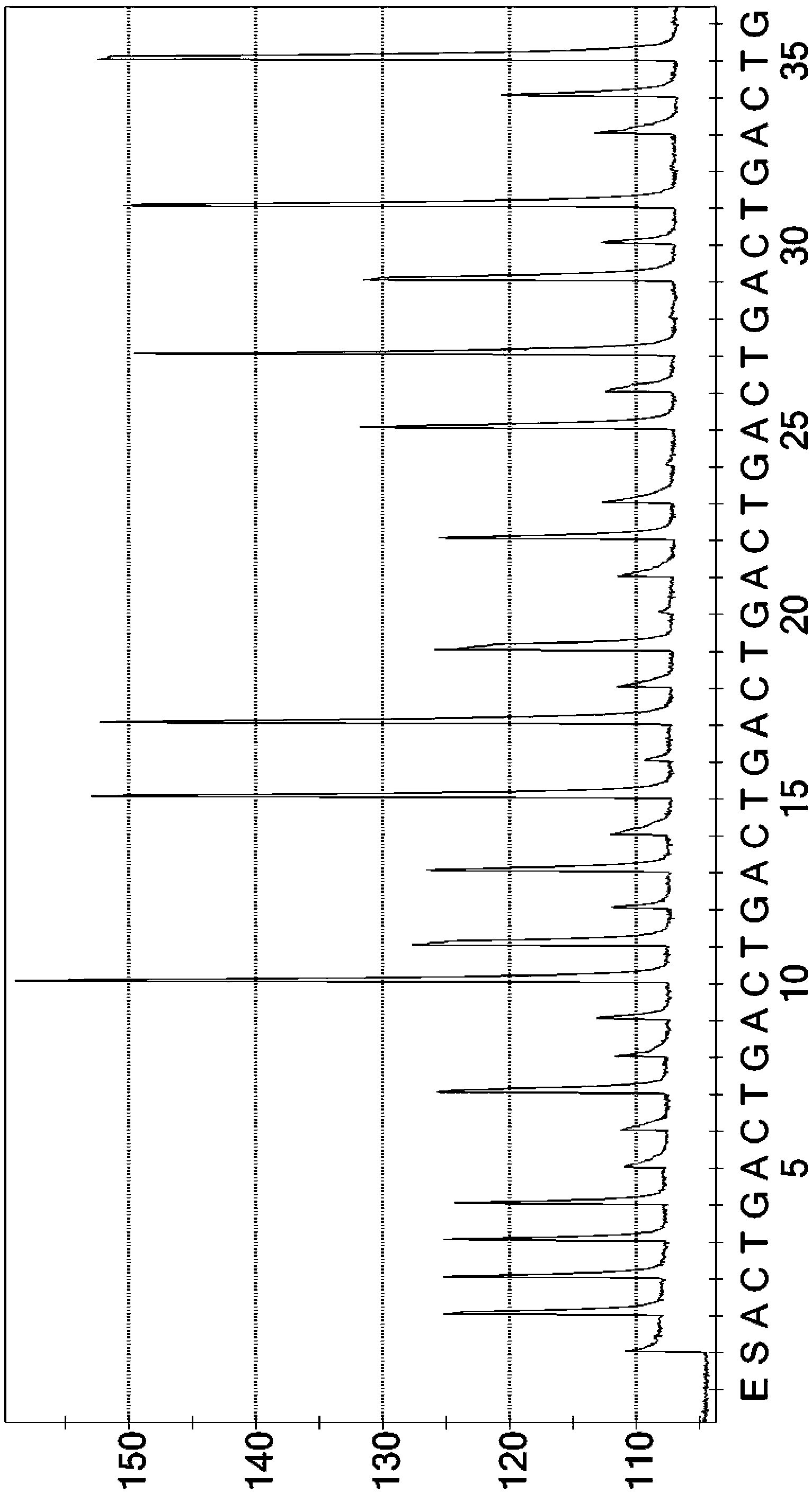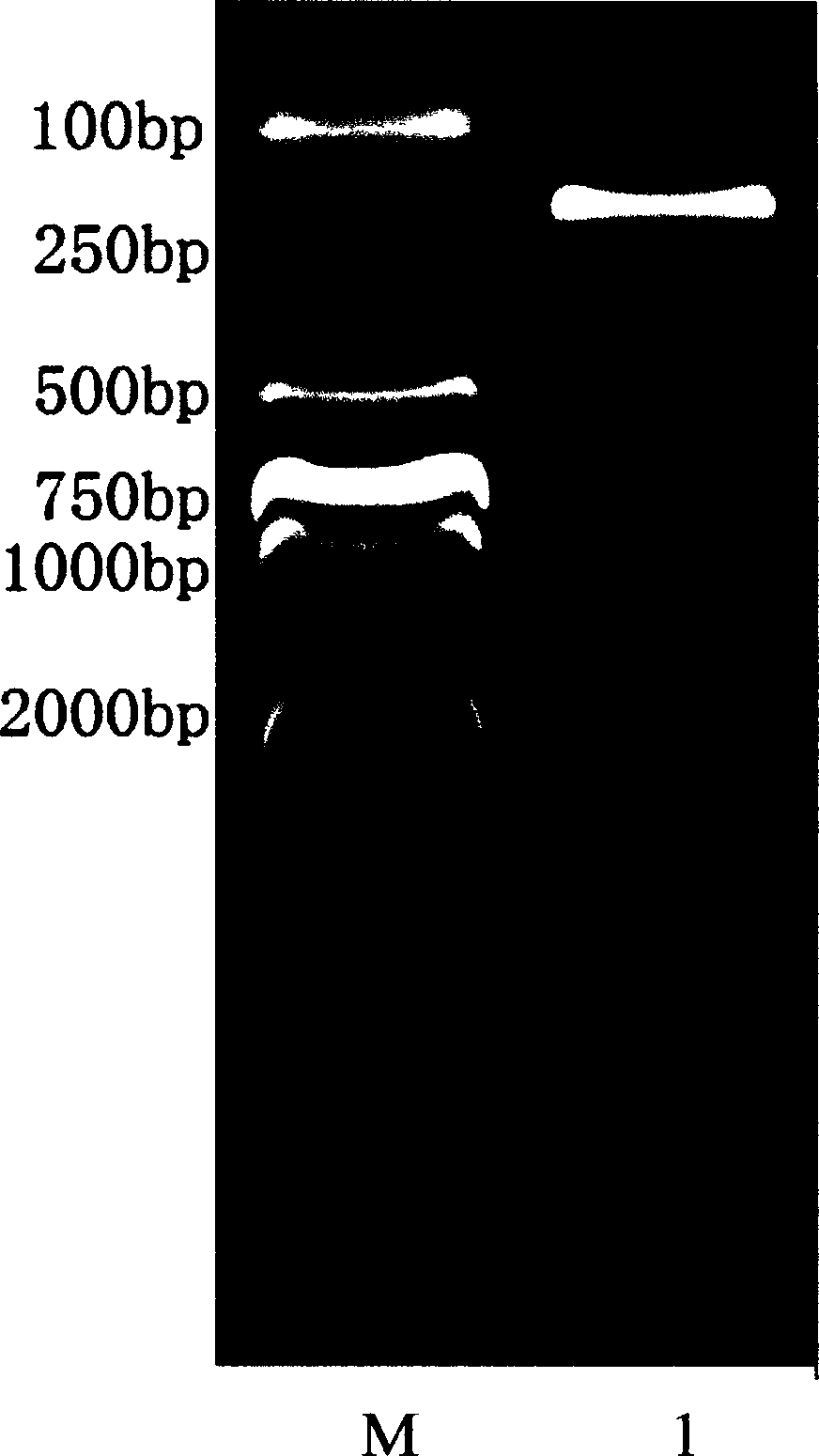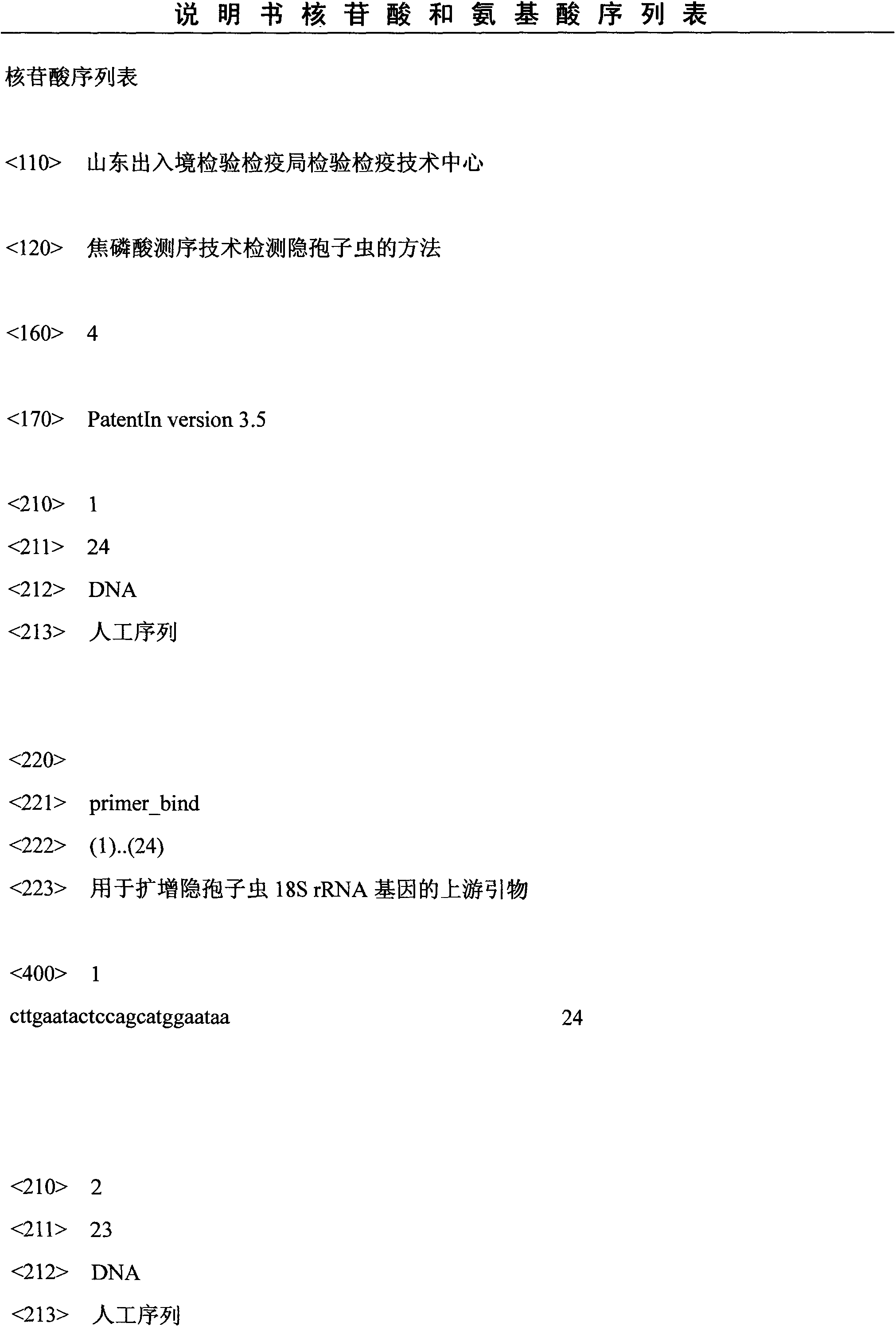Method for detecting cryptosporidium by using pyrosequencing technology
A technology of pyrosequencing and cryptosporidium, which is applied in microorganism-based methods, microbial determination/inspection, biochemical equipment and methods, etc. Small volume and easy operation
- Summary
- Abstract
- Description
- Claims
- Application Information
AI Technical Summary
Problems solved by technology
Method used
Image
Examples
Embodiment 1
[0024] Example 1: Detecting whether Cryptosporidium is contained in fecal samples of infected persons
[0025] 1. Design specific primer sequences
[0026] Log in to the National Center for Bioinformatics (NCBI) of the United States through the Internet to query and retrieve the published 18SrRNA nucleotide sequence of Cryptosporidium, which does not contain unknown base component sequences. Select only one strain, use the Editseq and MegAlign software in the DNAStar7.1 software package to edit the 18S rRNA gene nucleotide sequence of the selected sample, compare them one by one, and use the default parameters of the Clustal W Method (software) to align the selected 18S The rRNA nucleotide sequence is compared for homology, and the specific nucleotide sequence (target detection sequence) that characterizes the insect is found.
[0027]The design of PCR amplification primers and sequencing primers can be carried out by Assay Design SW software, and a set of primers with higher...
Embodiment 2
[0044] Embodiment 2: Detect whether cryptosporidium is contained in certain waters
[0045] 1. Design specific primer sequences
[0046] With embodiment 1.
[0047] 2. Extract the DNA of the sample to be tested:
[0048] Collect a certain volume of water samples (10L of source water, 50L of filtered water), filter through a 1μm pore size filter membrane, wash the container with PBS+0.1%Tween80, ethanol, and ultrapure water in sequence, dissolve the filter membrane with 40mL of acetone, and dissolve the filter membrane at 3000r / After centrifuging at 2 min to remove the supernatant, add 40 mL of acetone solution again and centrifuge to remove the supernatant to obtain the corresponding precipitate.
[0049] Add 6mL of PBS+0.1%Tween80 to the concentrated precipitate, shake it with a shaker for 2min, mix evenly and divide the solution into four 15mL centrifuge tubes, add 3mL of centrifuge medium Percoll-sucrose to each centrifuge tube, Centrifuge at 20°C and 3000r / min for 10mi...
Embodiment 3
[0055] Example 3: Detecting whether Cryptosporidium genes are contained in different protozoan samples
[0056] 1. Design specific primer sequences
[0057] With embodiment 1.
[0058] 2. Extract the DNA of the sample to be tested
[0059] 2.1 Source of Cryptosporidium strains
[0060] The Cryptosporidium strains used in this experiment were purchased from BTF Company in Australia, and mice were used to preserve the species.
[0061] 2.2 Control DNA samples
[0062] DNA samples of Schistosoma japonicum, Toxoplasma gondii and Entamoeba histolytica were provided by Shanghai Veterinary Research Institute. Cryptosporidium (Giardia lamblia) samples were prepared in our laboratory
[0063] 2.3 Isolation and purification of Cryptosporidium and DNA preparation
[0064] Filter the sample containing Cryptosporidium cysts through a 100-mesh fine copper mesh, centrifuge the filtrate (3000r / min, 10min), discard the supernatant, add normal saline to the precipitate to 2mL; take anothe...
PUM
 Login to View More
Login to View More Abstract
Description
Claims
Application Information
 Login to View More
Login to View More - R&D
- Intellectual Property
- Life Sciences
- Materials
- Tech Scout
- Unparalleled Data Quality
- Higher Quality Content
- 60% Fewer Hallucinations
Browse by: Latest US Patents, China's latest patents, Technical Efficacy Thesaurus, Application Domain, Technology Topic, Popular Technical Reports.
© 2025 PatSnap. All rights reserved.Legal|Privacy policy|Modern Slavery Act Transparency Statement|Sitemap|About US| Contact US: help@patsnap.com



